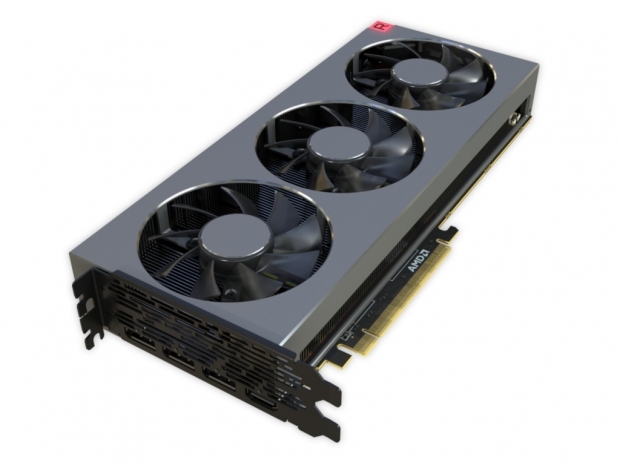Bear in mind that we are working with estimates that, based on our investigations, might be close to the actual bill or materials. The BOM number we dug out spans between $650 and $700. AMD confirmed at its CES press event that the Radeon VII price sits at $699 which makes it impossible to make any meaningful money on the card. Radeon VII is about showing that AMD is still playing in the high end more than an actually economically viable solution.
One thing that we learned in following AMD for more than two decades, AMD was never about making money on every single product, it was more a company which wanted to gain market share and then slowly gain meaningful margins.
HBM 2 $320
As previously stated, the HBM 2 memory is the most expensive part of the card as it costs as much as $320 per card. Assuming that the $650 is the BOM number, the memory costs almost half of the whole card. Having a card with 8GB would significantly reduce the bill of material cost, but it would involve new engineering costs to design such a card and AMD would have to repackage the Vega 20 and create a package with 8GB (2x4GB HBM2) chips instead of the existing 4x4GB HBM2. When AMD sells Instinct MI50 / Mi60 card for $8,000 to $10,000 there is plenty of margin to make on the card, but the company knows that not too many people will buy an AI card. This is a totally different market compared to gamers. The memory spending is hard to justify for the gaming card.
Packaging $100, cooler and PCB $75
The packaging itself, due to the complexity of interposer, is close to $100 while the cooler and the PCB end up at close to $75. The rest of the cost is split between the Vega 20 design and the 7nm cost. We know that 7nm high performance is dramatically more expensive compared to 16nm TSMC that Nvidia or 14nm FinFET that AMD used for the original Vega in 2017.
The rest of the cost is split between TSMC 7nm manufacturing cost and AMD's engineering bill to make the card. 7nm in early 2019 and late 2018 is reserved for some rock star customers that include Apple with its A12, Huawei with the Kirin 980 as well as Qualcomm with the Snapdragon 855. All these chips are tiny compared to AMD’s huge 331 mm2 GPU and AMD is a high performance part versus all the mobile chips that usually operate in under 3W TDP. AMD GPUs are usually in 100s of watts TDP. We call these three companies rock stars as they order millions of chips, and Apple even 10s of millions of chips per quarter.
Great for AMD gaming customers
This is great news for consumers as AMD is not overcharging for the card. For what it is worth, based on these numbers AMD is actually undercharging end users. The company could not go higher than $699 as it needs to compete against Nvidia that came up with the new Turing chip and Geforce 2080 and a new "Ray Tracing” feature. This is the power of competition and why it is always great to have it. Currently Geforce GTX sells for $699 in the US and this is the price that AMD is aiming at.
We salute Scott Herkelman ,VP & GM Radeon Gaming, and his team’s ability to convince Lisa and the rest of AMD management to create Radeon VII. It is a great statement and lets hope that the card fulfils some of the performance estimates. February 7 is the day.
Good competition drives prices down but Nvidia is a tough company to go against. Having Intel coming to the GPU game at some point next year will make things even more interesting.




